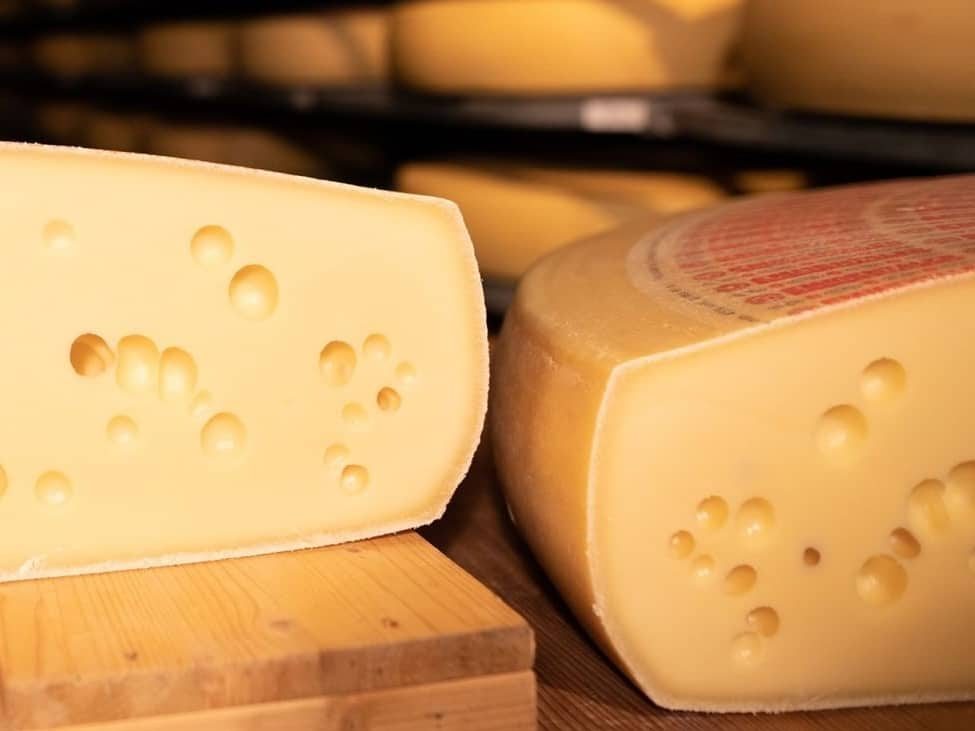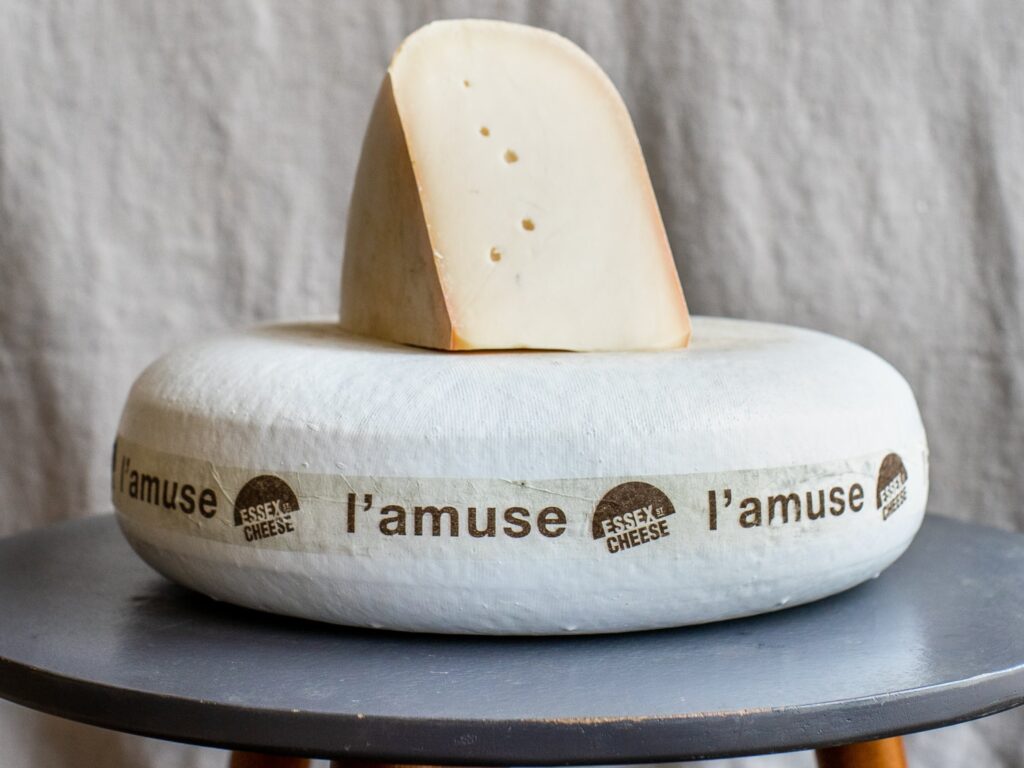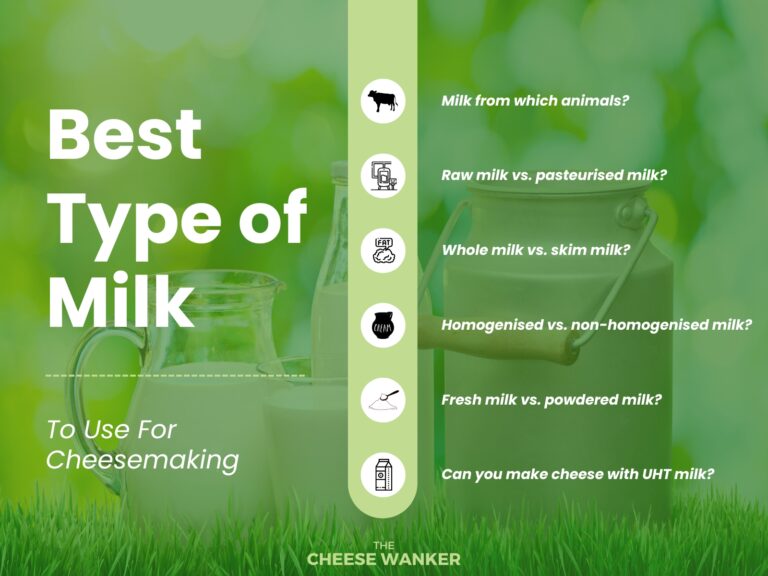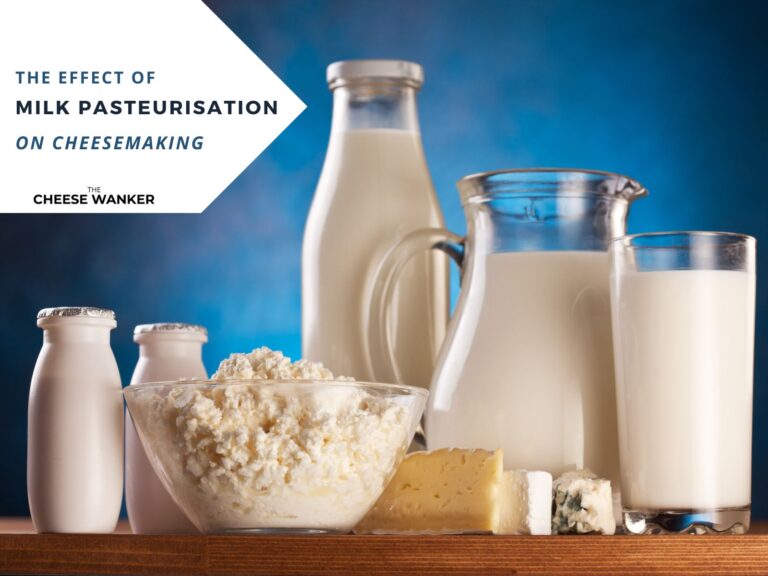You’ve all seen them, whether they’re in the famous Swiss cheese, Emmentaler or some Dutch Gouda. But have you ever wondered why there are holes in some cheeses but not others? Actually, those round “holes” are called eyes and are far from being production faults. Let’s take a nerdy dive into the science.

SEE ALSO: Nine best Swiss cheeses that are guaranteed to knock your socks off →
The real Swiss cheese
When most people think of Swiss cheese with holes, Emmentaler is the one they picture. While there are other very popular Swiss cheeses such as Gruyère and Appenzeller, there is something truly iconic about this huge, holey cheese.
Due to its large size and spattering of eyes, it has become instantly recognisable in the canton of Bern where it is originally from. And, all around the world.
Eyes formed by carbon dioxide
The large eyes in Emmentaler are caused by carbon dioxide. But, where does it come from?
Actually, Swiss cheesemakers add a bacterium called Propionibacterium freudenreichii (subspecies sherminii) to the milk during production.
This bacterium converts the lactic acid produced by the starter cultures into carbon dioxide, propionic acid and acetic acid. Consequently, the carbon dioxide forms the eyes in the cheese and the other 2 by-products contribute to the unique taste of Emmentaler.
Controlled by temperature during ageing
Moreover, the affineur (person who matures cheese) can control the size and shape of the eyes by regulating the temperature at which the wheels of cheese are stored.
Overall, they mature the cheese for a minimum of 2 months at a relatively warm temperature to encourage the formation of large eyes.
How about the holes in Gouda?

With Gouda on the other hand, the eyes tend to be smaller. While they are still formed by carbon dioxide, the process is a bit different. Indeed, cheesemakers add Lactococcus and Leuconostoc strains of bacteria to the milk during production.
Consequently, those bacteria convert citric acid in the milk into carbon dioxide and diacetyl. Because the amount of carbon dioxide produced is less than in Emmentaler, the eyes are typically smaller. Furthermore, the diacetyl contributes to that signature flavour that we associate with Gouda.
More than one way to form eyes
Now that you know why there are holes in some cheeses, you are ready to impress all your cheese loving friends at your next gathering.
Do you have any other cheese science questions? Drop us a comment below.




What about the Swiss scientists who claim that microscopic hay flecks cause the holes? Is that just BS?
Here’s one of the articles I was referring to regarding the new theory about the holes in Swiss cheese. The study hasn’t been peer reviewed and could be nonsense. https://www.science.org/content/article/hay-dust-responsible-swiss-cheese-holes
That was an interesting theory indeed. But it does not explain how cheeses made in other environments can still have large holes/eyes. In particular, there are a number of Turkish mountain cheeses that have eyes even bigger that Emmental/Emmentaler. And the only thing they have in common in the Propionibacterium freudenreichii (subspecies sherminii) bacterium.